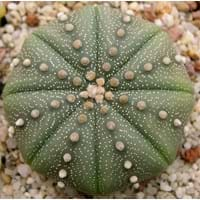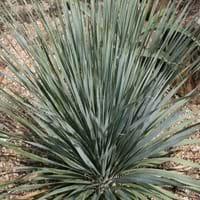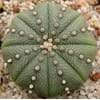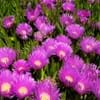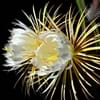Life Span
Perennial
Perennial
Type
Ornamental Plant
Cactus or Succulent
Origin
Not Available
Southwestern United States, Mexico
Types
Not Available
Dasylirion acrotrichum, Dasylirion berlandieri, Dasylirion cedrosanum
Habitat
Desert, Semi desert
Desert, Dry areas, Rocky areas
USDA Hardiness Zone
12-15
12-15
AHS Heat Zone
12-10
12-10
Sunset Zone
21, 22, 23, 24
10, 11, 12, 13, 14, 15, 16, 17, 18, 19, 20, 21, 22, 23, 24
Habit
Oval or Rounded
Rosette/Stemless
Flower Color
Yellow
Yellow
Flower Color Modifier
Not Available
Not Available
Fruit Color
Non Fruiting Plant
Tan
Leaf Color in Spring
Not Available
Green, Blue Green
Leaf Color in Summer
Not Available
Green, Blue Green
Leaf Color in Fall
Not Available
Green, Blue Green
Leaf Color in Winter
Not Available
Green, Blue Green
Leaf Shape
Elliptic
Narrow
Plant Season
Not Available
Spring, Summer, Fall, Winter
Sunlight
Not Available
Full Sun
Growth Rate
Very Slow
Slow
Type of Soil
Not Available
Loam, Sand
The pH of Soil
Not Available
Neutral, Alkaline
Soil Drainage
Not Available
Well drained
Repeat Bloomer
Not Available
No
Tolerances
Not Available
Drought
Where to Plant?
Container, Ground, Pot
Container, Ground
How to Plant?
Cuttings, Stem Cutting
Leaf Cutting, Seedlings, Stem Cutting
Plant Maintenance
Medium
Medium
Watering Requirements
Needs very little water
Does not require lot of watering, Water occasionally
In Summer
Lots of watering
Lots of watering
In Spring
Moderate
Moderate
In Winter
Average Water
Average Water
Soil pH
Not Available
Neutral, Alkaline
Soil Type
Not Available
Loam, Sand
Soil Drainage Capacity
Not Available
Well drained
Sun Exposure
Not Available
Full Sun
Pruning
Remove damaged leaves, Remove dead branches, Remove dead leaves
Remove damaged leaves, Remove dead branches, Remove dead leaves, Remove dead or diseased plant parts
Fertilizers
All-Purpose Liquid Fertilizer
All-Purpose Liquid Fertilizer, Fertilzer with low nitrogen content
Pests and Diseases
Mealy bugs
Red blotch
Plant Tolerance
Drought
Drought
Flower Petal Number
Single
Single
Fragrant Fruit
Not Available
No
Fragrant Bark/Stem
Not Available
Not Available
Showy Foliage
Not Available
Yes
Showy Bark
Not Available
No
Foliage Texture
Bold
Bold
Foliage Sheen
Not Available
Matte
Invasive
Not Available
No
Self-Sowing
Not Available
No
Attracts
Hummingbirds
Bees, Butterflies, Not Available
Allergy
Not Available
Not Available
Aesthetic Uses
Showy Purposes
Ground Cover
Beauty Benefits
Not Available
Not Available
Environmental Uses
Air purification
Air purification
Medicinal Uses
No Medicinal Use
Not Available
Part of Plant Used
Not Available
Not Available
Other Uses
Not Available
useful as a ground cover
Used As Indoor Plant
Yes
No
Used As Outdoor Plant
Yes
Yes
Garden Design
Bedding Plant
Container, Dried Flower, Everlasting, Feature Plant, Rock Garden, Wall, Wildflower
Botanical Name
Astrophytum myriostigma
DASYLIRION berlandieri
Common Name
Bishop's Cap Cactus, Bishop's Hat, Bishop's Miter Cactus ,Star Cactus
Blue Giant, Blue Twister, Desert Spoon, Zaragosa
In Hindi
Star Cactus
Blue Giant Grass
In German
Star Cactus
Blue Giant Grass
In French
Star Cactus
Blue Giant Herbe
In Spanish
Star Cactus
Blue Grass gigante
In Greek
Star Cactus
Μπλε Giant Grass
In Portuguese
Star Cactus
Blue Grass gigante
In Polish
Star Cactus
Błękitny Gigant Trawa
In Latin
Star Cactus
Giant herba blue
Phylum
Magnoliophyta
Tracheophyta
Class
Magnoliopsida
Not Available
Order
Caryophyllales
Asparagales
Family
Cactaceae
Agavaceae
Genus
Astrophytum
Dasylirion
Clade
Angiosperms, Core eudicots, Eudicots
Angiosperms, Monocots
Tribe
Cacteae
Not Available
Subfamily
Cactoideae
Nolinoideae
Difference Between Bishop's Cap Cactus and Blue Giant
If you are confused whether Bishop's Cap Cactus or Blue Giant are same, here are some features about those plants to help you choose better. Many people think that these two plants have the same characteristics, but one can see Bishop's Cap Cactus and Blue Giant Information and learn more about it. Fertilizers required for proper growth of Bishop's Cap Cactus are All-Purpose Liquid Fertilizer, whereas for Blue Giant fertilizers required are All-Purpose Liquid Fertilizer and Fertilzer with low nitrogen content. Hence, one should know the basic difference between Bishop's Cap Cactus and Blue Giant if you are planning to have them in your garden to enhance its beauty.
<
Flowering PlantsImportance of Bishop's Cap Cactus and Blue Giant
Want to have the most appropriate plant for your garden? You might want to know the importance of Bishop's Cap Cactus and Blue Giant. Basically, these two plants vary in many aspects. Compare Bishop's Cap Cactus and Blue Giant as they differ in many characteristics such as their life, care, benefits, facts, etc. Every gardener must at least have the slightest clue about the plants he wants to plant in his garden. Compare their benefits, which differ in many ways like facts and uses. The medicinal use of Bishop's Cap Cactus is No Medicinal Use whereas of Blue Giant is Not Available. Bishop's Cap Cactus has beauty benefits as follows: Not Available while Blue Giant has beauty benefits as follows: Not Available.
Compare Facts of Bishop's Cap Cactus vs Blue Giant
How to choose the best garden plant for your garden depending upon its facts? Here garden plant comparison will help you to solve this query. Compare the facts of Bishop's Cap Cactus vs Blue Giant and know which one to choose. As garden plants have benefits and other uses, allergy is also a major drawback of plants for some people. Allergic reactions of Bishop's Cap Cactus are Not Available whereas of Blue Giant have Not Available respectively. Having a fruit bearing plant in your garden can be a plus point of your garden. Bishop's Cap Cactus has no showy fruits and Blue Giant has no showy fruits. Also Bishop's Cap Cactus is not flowering and Blue Giant is not flowering . You can compare Bishop's Cap Cactus and Blue Giant facts and facts of other plants too.
